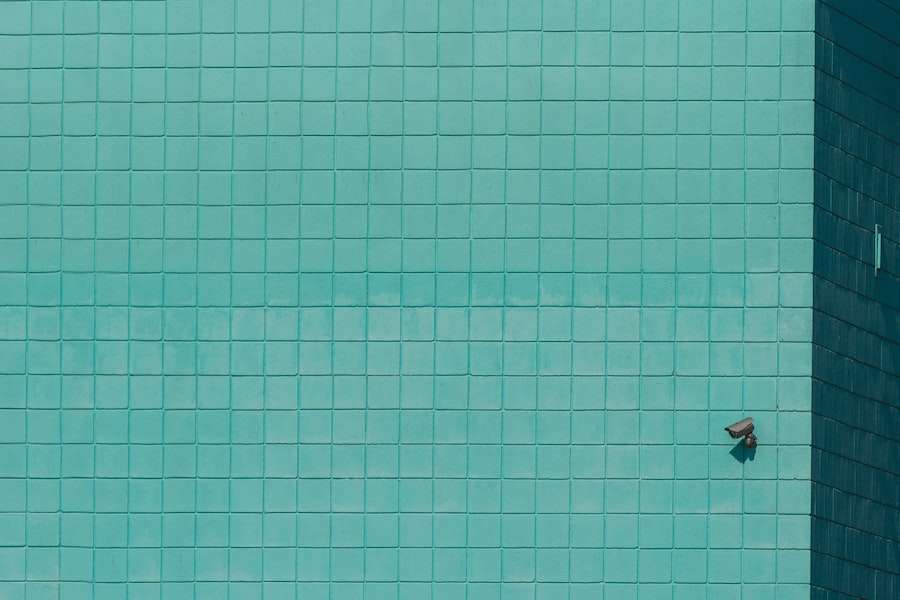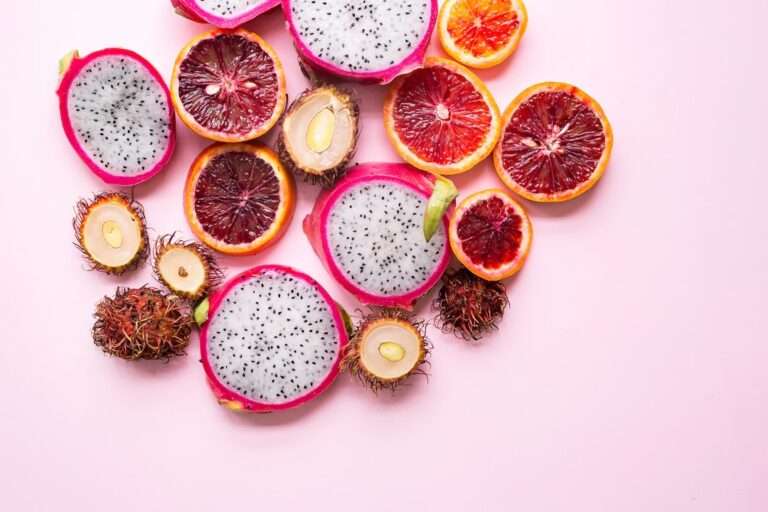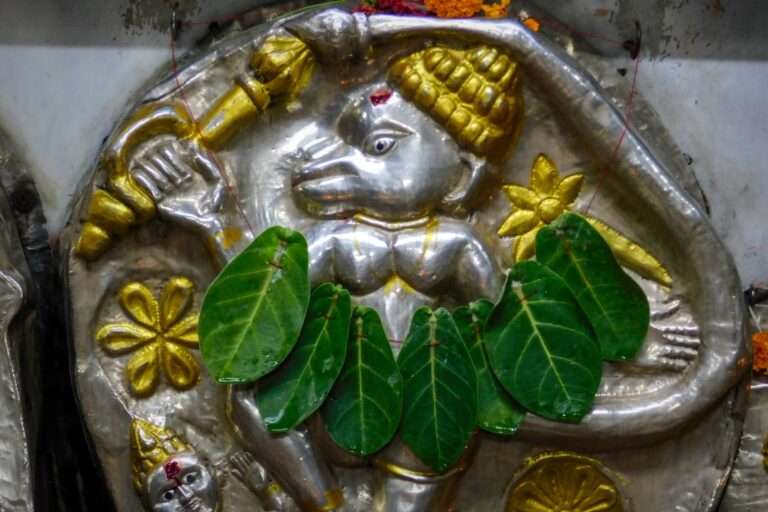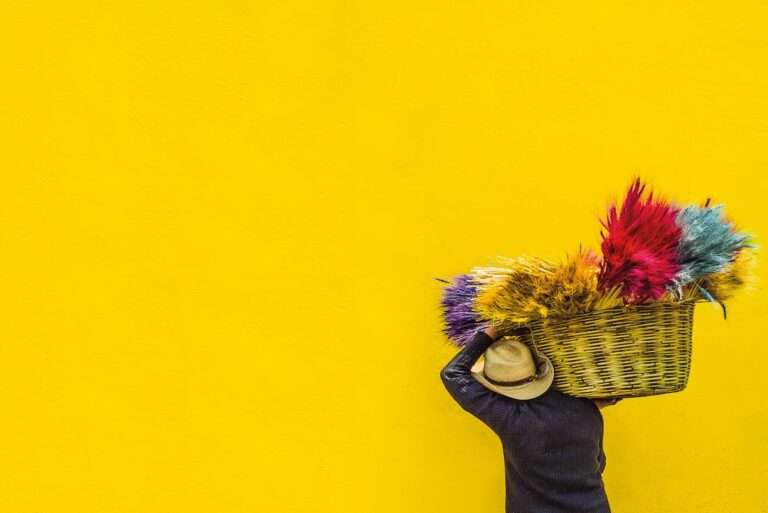The Deeper Meaning Behind The Color Teal

Teal is a color that has gained popularity in various fields, from fashion and design to art and spirituality. Its unique blend of blue and green hues creates a vibrant and soothing shade that appeals to many. In this blog post, we will explore the origins, psychology, symbolism, and healing properties of teal. We will also examine its role in nature, fashion, and personal growth. By the end of this article, you will have a deeper understanding of the significance of teal and how you can incorporate it into your daily life.
The Origins of Teal: Tracing the History of this Unique Color
Teal is a color that is often described as a medium to dark greenish-blue or bluish-green. It gets its name from the common teal bird, which has a similar shade on its head and wings. The color teal has been used for centuries in various forms of art and design.
The history of teal can be traced back to ancient times. In ancient Egypt, teal was associated with fertility and rebirth. It was often used in jewelry and decorative objects. In ancient Greece, teal was associated with water and was used to represent the sea in paintings and sculptures.
Over time, the color teal has evolved and taken on different meanings in different cultures. In the 20th century, teal became popular in fashion and interior design. It was seen as a sophisticated and calming color that could be used to create a serene environment.
The Psychology of Teal: Understanding the Emotional Impact of this Shade
Color has a powerful impact on our emotions and behavior. Different colors can evoke different feelings and moods. Teal is often associated with calmness, tranquility, and balance. It is believed to have a soothing effect on the mind and body.
The color teal is known to promote feelings of relaxation and peace. It can help reduce stress and anxiety, making it an ideal color for spaces where people want to unwind and recharge. Teal is also associated with clarity and focus, making it a great color for workspaces and study areas.
In addition to its calming properties, teal is also seen as a color of healing and renewal. It is often used in alternative medicine and therapy to promote emotional and physical well-being. The color teal is believed to have a harmonizing effect on the body’s energy centers, or chakras, helping to restore balance and promote healing.
The Symbolism of Teal in Art and Culture: Unpacking its Significance in Different Contexts
Teal has been used symbolically in art and culture for centuries. In many cultures, teal is associated with water and the sea. It represents tranquility, depth, and the unknown. In some traditions, teal is also associated with spiritual growth and transformation.
In art, teal is often used to convey a sense of calmness and serenity. It can be used to create a peaceful atmosphere or to evoke feelings of introspection and contemplation. Teal is also used in design to add a pop of color and create visual interest.
In fashion, teal is a popular choice for its versatility and ability to complement a wide range of skin tones. It can be worn as a statement color or as an accent to add depth and dimension to an outfit. Teal is often associated with elegance and sophistication, making it a popular choice for formal occasions.
Teal in Nature: Examining the Role of this Color in the Natural World
Teal is a color that can be found abundantly in nature. From the vibrant feathers of birds to the shimmering scales of fish, teal plays an important role in the animal kingdom. Many animals use teal as a form of camouflage, blending into their surroundings to avoid predators or sneak up on prey.
In plants, teal can be seen in the leaves of certain species, such as the water lily and the eucalyptus tree. These plants use teal to attract pollinators and to protect themselves from harsh environmental conditions.
The prevalence of teal in nature also has an impact on the environment. Teal-colored bodies of water, such as lakes and oceans, are often home to a diverse range of plant and animal species. These ecosystems play a crucial role in maintaining the balance of our planet’s biodiversity.
The Healing Properties of Teal: Exploring its Therapeutic Benefits

Teal is often used in alternative medicine and therapy for its healing properties. It is believed to have a calming and soothing effect on the mind and body, making it an ideal color for relaxation and stress relief.
In color therapy, teal is used to promote emotional healing and balance. It is believed to help release negative emotions and promote a sense of inner peace. Teal can also be used to promote physical healing by reducing inflammation and promoting cellular regeneration.
Incorporating teal into your daily life can have numerous benefits. You can use teal-colored objects, such as candles or crystals, in your meditation or relaxation practices. You can also wear teal-colored clothing or decorate your space with teal accents to create a calming and soothing environment.
Teal in Fashion and Design: Analyzing its Use in Clothing, Interiors, and Products
Teal has become increasingly popular in fashion and design in recent years. Its versatility and ability to complement a wide range of colors make it a popular choice for clothing, interiors, and products.
In fashion, teal is often used as a statement color or as an accent to add depth and dimension to an outfit. It can be worn as a bold dress or as a subtle accessory, depending on the desired effect. Teal is also a popular choice for bridesmaids’ dresses, as it complements many different skin tones.
In interior design, teal is often used to create a calming and soothing environment. It can be used as a wall color or as an accent in furniture and accessories. Teal is also a popular choice for bathrooms and bedrooms, as it promotes relaxation and tranquility.
In product design, teal is often used to create a sense of luxury and sophistication. It can be found in everything from home decor to electronics. Teal-colored products are often seen as high-end and stylish, making them a popular choice for consumers.
Teal in Spirituality: Investigating its Role in Meditation and Energy Healing
Teal has long been associated with spirituality and energy healing. In many traditions, teal is seen as a color of balance and harmony. It is believed to help align the mind, body, and spirit, promoting a sense of wholeness and well-being.
In meditation, teal can be used to promote mindfulness and focus. By focusing on the color teal, practitioners can enter a state of deep relaxation and inner peace. Teal-colored objects, such as crystals or mandalas, can also be used as tools for meditation and energy healing.
In energy healing, teal is believed to have a harmonizing effect on the body’s energy centers, or chakras. It is often used to promote emotional healing and balance. Teal-colored gemstones, such as aquamarine or amazonite, are believed to have powerful healing properties.
Teal and Personal Growth: Using this Color to Foster Inner Peace and Self-Awareness
Teal can be used as a tool for personal growth and development. Its calming properties can help reduce stress and anxiety, allowing individuals to focus on their personal goals and aspirations.
By incorporating teal into daily life, individuals can foster inner peace and self-awareness. This can be done through meditation or mindfulness practices that involve focusing on the color teal. By doing so, individuals can cultivate a sense of clarity and purpose.
Teal can also help individuals develop emotional intelligence and self-awareness. By understanding the impact of color on emotions and behavior, individuals can better navigate their own emotions and the emotions of others. This can lead to more meaningful and fulfilling relationships.
Teal in Relationships: Exploring its Connection to Communication and Connection
Teal can have a profound impact on communication and relationships. Its calming properties can help reduce conflict and promote understanding between individuals.
By incorporating teal into relationship-building practices, individuals can create a safe and nurturing environment for open and honest communication. This can be done through the use of teal-colored objects, such as candles or artwork, that promote a sense of calmness and tranquility.
Teal can also be used to promote connection and understanding in romantic relationships. By incorporating teal into shared spaces or activities, couples can create a sense of intimacy and closeness. Teal-colored lingerie or bedroom decor can also add a touch of romance to the relationship.
The Future of Teal: Predicting the Role of this Color in Art, Design, and Culture in the Years to Come
The future of teal in art, design, and culture looks promising. As more people become aware of the calming and soothing properties of teal, its popularity is likely to continue to grow.
In art, teal is likely to be used in new and innovative ways. Artists may experiment with different shades of teal or combine it with other colors to create unique and captivating works of art. Teal may also be used to convey new meanings or emotions in art.
In design, teal is likely to continue to be used in interiors, fashion, and products. Its versatility and ability to complement a wide range of colors make it a popular choice for designers. Teal may also be used in new materials or technologies that are developed in the future.
In culture, teal may continue to be associated with calmness, tranquility, and balance. As more people become aware of the healing properties of teal, it may be used in alternative medicine and therapy to promote emotional and physical well-being.
Teal is a color that has gained popularity in various fields, from fashion and design to art and spirituality. Its unique blend of blue and green hues creates a vibrant and soothing shade that appeals to many. Teal has a rich history and is associated with various meanings and symbolism in different cultures.
The psychology of teal reveals its impact on emotions and behavior. Teal is known for its calming properties and ability to promote relaxation and peace. It is often used in alternative medicine and therapy for its healing properties.
Teal can be found abundantly in nature, where it plays an important role in the survival of many species. Its prevalence in the natural world has an impact on the environment and biodiversity.
Teal is also used in fashion, design, and spirituality to create a sense of style, balance, and connection. It can be used as a tool for personal growth and development, as well as for promoting communication and understanding in relationships.
As we look to the future, teal is likely to continue to play a significant role in art, design, and culture. Its versatility and soothing properties make it a popular choice for many individuals. By incorporating teal into our daily lives, we can experience its calming effects and promote a sense of well-being.
If you’re interested in exploring more symbolism, you might find the article on the symbolism of a snake fascinating. Snakes have long been associated with various meanings across different cultures and religions. They can represent transformation, healing, and even wisdom. To delve deeper into the intriguing world of snake symbolism, check out this article on Symbolism Hub.
FAQs
What is Teal Symbolism?
Teal Symbolism refers to the meaning and significance associated with the color teal.
What is the meaning of the color teal?
Teal is a combination of blue and green, and it represents balance, tranquility, and stability. It is also associated with emotional healing and spiritual grounding.
What cultures use teal symbolism?
Teal symbolism is used in various cultures around the world, including Native American, Hindu, and Chinese cultures.
What are some common objects associated with teal symbolism?
Some common objects associated with teal symbolism include gemstones such as turquoise and aquamarine, as well as animals like the peacock and the blue jay.
What emotions are associated with teal symbolism?
Teal is associated with emotions such as calmness, serenity, and balance. It is also believed to promote emotional healing and spiritual growth.
What are some common uses of teal in art and design?
Teal is often used in art and design to create a sense of calmness and tranquility. It is also used to represent nature and the environment, as well as to create a sense of sophistication and elegance.





